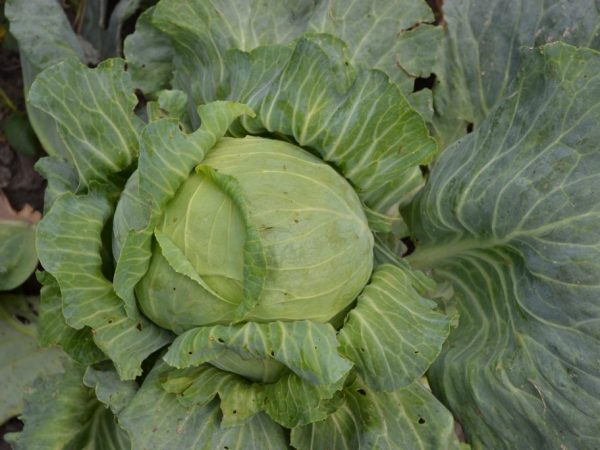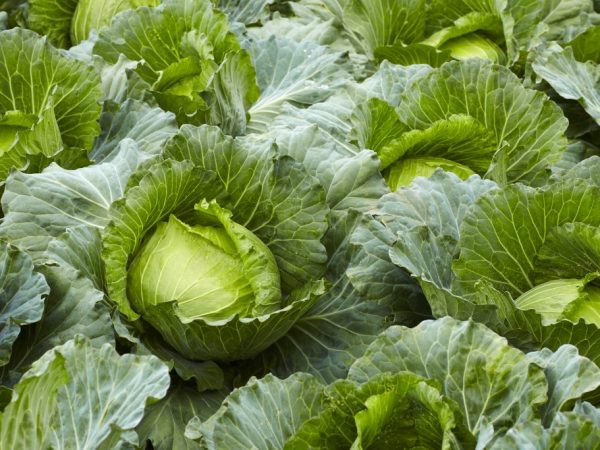Description of cabbage variety Ankoma f1
Ankoma white cabbage is a well-known late-ripening variety. It is very popular among gardeners. The hybrid is resistant to external factors, has a short ripening period. The shelf life is long, without loss of appearance. Late cabbage Ancoma f1 is valued for its large amount of trace elements and vitamins.

Description of cabbage variety Ankoma f1
Composition
Ankoma f1 has a rich chemical composition. It includes vitamins A, B, K, PP and many other useful substances.
Vitamin C in the composition is a powerful antioxidant, it is responsible for many processes in the human body: it removes toxins, helps to cope with respiratory diseases. The Ankoma variety has the most stable chemical composition of the vitamin, therefore, after fermentation or other processing, the beneficial properties of the vegetable do not disappear.
Vitamin U is a rare compound found in very few raw vegetables. Late-ripening cabbage varieties have a lot of it. Vitamin juice is able to heal stomach ulcers at an early stage.
Ankoma is a low-calorie vegetable, there are only 27 kcal per 100 g of the product. The vegetable helps with edema, removes excess fluid from the body. Bruises and other mechanical damage can be easily removed by applying a cabbage leaf to the affected area.
Characteristics of the variety
The Ankoma variety has a strong and well-developed horse system. The technical ripeness of the vegetable is short-lived. Most often, the variety is used for planting in open ground.
Brief characteristics of the Ankoma f1 variety:
| View | Color | Grade | Ripening period | Head mass | Technical maturity | Head density |
| White-headed | White | Hybrid | Late ripening | 2.5 to 5.5 kg | 120-130 days | 4.5 points |
Seedlings are planted from mid-April to mid-June. The variety is resistant to droughts, unpretentious in care. Ancoma has good disease resistance.
Harvested from late August to late October. The heads are stored until May next year. Planting time, growing season and maturation of the vegetable may vary.
Description of the variety:
- heads of cabbage are round;
- the head of the vegetable is firm, dense;
- leaves are thin, well adjacent to each other;
- the upper cover has a waxy coating;
- the stump is not long.
White-headed variety Ankoma, distinguished by its ability to simultaneously ripen the heads. At the end of the harvest, all heads of cabbage have the same shape and similar weight.
Planting and leaving

Caring for cabbage is not difficult
The Ankoma variety is planted mainly in open ground. The seeds are sown in peat pots. The best effect of growing seedlings is obtained under film greenhouses. After planting, the seeds germinate in 14-20 days. Each stem should have 2-3 confident leaves.
The plot for planting cabbage is prepared in the fall: they dig up and level the ground, remove weeds, and process them with organic fertilizers. The area should be sunny, with no shadows at all, otherwise the top sheets will be large and loose.
Preparation and planting of seedlings
Ready seedlings are planted from peat cups into holes with an indentation of 25-30 cm according to the scheme one cup - one hole.Be sure to take into account the width of the indentation between the rows. It must be at least 35 cm, otherwise the heads of the vegetable will not be able to fully develop.
It is recommended to transplant seedlings in open ground on a cloudy day, early in the morning or late in the evening. Do not plant in cold weather. How to plant Ankoma f1 seedlings correctly:
- deepen the seedlings in the hole to the first leaf;
- cover the stem with soil;
- water abundantly, repeat the procedure on the second day;
- shade with agrofiber for the first 2 days.
To disinfect still young, unrooted seedlings, the bushes are daily watered with a soft pink solution of potassium permanganate, and also sprinkled with wood ash.
Proper watering
After planting, the seedlings are watered 2-3 times a week. Before the head of cabbage is formed, the rate of water consumption is high: 2 buckets per hole. Next comes a gradual decrease in quantity. If they plan to lay Ankom cabbage for storage, watering is stopped a month before harvesting.
It is best to water the vegetable fractionally, several times a day. After the procedure, be sure to loosen the earth so that oxygen enters the root system.
Pests and the fight against them
Ankoma cabbage is resistant to pests, but additional care is still required. Organic fertilizers are considered the most favorable for a vegetable: chicken and cow droppings, fermented green grass.
From dangerous diseases (black leg, downy mildew, fungal parasites), ready-made store solutions help. You can use folk methods of struggle: tincture of garlic, nettle or dandelion.
The cabbage fly is the most common pest. There are several types of it. The larvae spoil the stump, which leads to the complete death of the seedlings. To get rid of them helps tobacco dust in half with ash. Sprinkle every few days until the flies disappear completely.
Conclusion
Ancoma cabbage is a common late-ripening vegetable. Ready seedlings are planted in open ground, but many gardeners use seedless growing technology, which proves the unpretentiousness of the variety.
The seeds of the hybrid variety are highly resistant to various climatic conditions. It is able to withstand severe drought, is characterized by a long shelf life and high taste, it is intended for salting and other types of processing.


